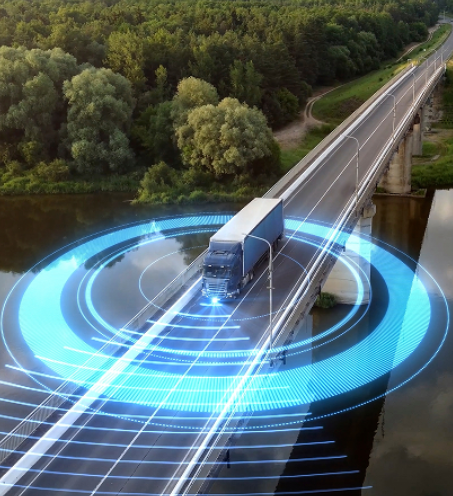Revolutionizing Disaster Preparedness in Logistics with AI

In logistics, being prepared for disasters is critical for minimizing disruptions, ensuring timely delivery of essential goods, and facilitating recovery efforts. Traditional disaster preparedness methods often rely on reactive measures, using historical data to plan responses. However, with the increasing frequency and impact of natural disasters, new technologies are required to improve the logistics sector’s ability to respond to emergencies effectively. Artificial Intelligence (AI) is emerging as a key player in transforming disaster preparedness by providing dynamic, predictive solutions that enhance resilience and efficiency.
The Importance of AI in Disaster Preparedness
Disasters, whether natural or man-made, can wreak havoc on supply chains. The logistics involved in disaster response requires swift action to deliver vital supplies such as food, medical supplies, and equipment to affected areas. The traditional approach to disaster preparedness often involves manual coordination, which can be slow and prone to errors. AI offers a way to not only optimize logistics but also improve decision-making, resource allocation, and real-time responses to rapidly changing circumstances.
Critical Aspects of Logistics in Disaster Management
- Supply Delivery: One of the core tasks in disaster management is ensuring that essential goods reach those in need as quickly as possible. This includes managing transportation and warehouse storage, ensuring supplies are available in the right quantities and locations when needed.
- Coordination of Personnel and Equipment: Logistics in a disaster scenario also involves moving people and equipment for search-and-rescue operations, as well as coordinating delivery vehicles, boats, and aircraft to get aid to the right locations.
- Supply Chain Disruptions: Natural disasters such as floods or hurricanes can damage infrastructure, block transport routes, and sever communication lines, making it harder to deliver supplies and services effectively.
- Adaptability to Unpredictability: Disasters are inherently unpredictable, requiring logistics systems that can quickly adjust and implement contingency plans in response to unforeseen changes.
- Security Concerns: In disaster-stricken areas, there is often an increased risk of looting or violence, which complicates the logistics of delivering aid safely. Ensuring the protection of goods and personnel is an added challenge.
How AI Enhances Disaster Preparedness
AI plays a vital role in improving disaster preparedness by offering proactive, data-driven solutions. Below are some key AI applications that are revolutionizing logistics during disaster management:
Predictive Analytics for Forecasting
AI’s predictive capabilities allow logistics companies to anticipate future events by analyzing past data and identifying patterns. For example, AI can forecast potential natural disasters like hurricanes or floods based on weather data and historical patterns. This helps logistics teams adjust their routes, prepare for inventory shortages, and optimize resources before a disaster hits.
Risk Assessment and Management
AI tools help in identifying and mitigating risks within supply chains. By analyzing vast amounts of data, AI can pinpoint vulnerabilities such as areas prone to flooding or suppliers with a history of disruptions. This enables logistics managers to develop effective risk management strategies, such as diversifying suppliers or strengthening infrastructure in critical locations.
Real-Time Resource Allocation and Monitoring
In a disaster scenario, the swift allocation of resources is critical. AI can monitor real-time data on weather conditions, traffic, and available resources to adjust logistics plans dynamically. By using GPS and RFID technology, AI systems can track the movement and condition of shipments in real-time, ensuring that goods are delivered to the right place at the right time, even when conditions are less than ideal.
Automated Decision-Making
AI-driven systems can automate decision-making processes, enabling rapid responses to changing circumstances. For instance, AI can determine which shipments are most critical, prioritize routes based on real-time conditions, and dynamically adjust plans as new information becomes available. This reduces the time spent on manual decision-making and increases the efficiency of disaster response efforts.
Challenges in Implementing AI for Disaster Preparedness
While AI presents numerous advantages, there are also challenges to consider when integrating AI into disaster preparedness strategies:
- Data Privacy and Security: AI requires access to vast amounts of sensitive data, raising concerns about privacy and security. It is essential to implement robust encryption and data protection measures to safeguard personal and operational information.
- Reliance on Technology: Over-reliance on AI systems can lead to vulnerabilities in the event of technical failures. To mitigate this risk, businesses must have backup systems and manual procedures in place to ensure continuity in case of an AI system malfunction.
- Data Quality and Availability: AI’s effectiveness depends on the quality and availability of the data it analyzes. Incomplete or inaccurate data can lead to misguided decisions. Ensuring a steady stream of high-quality, real-time data is essential for AI to function optimally.
- Integration with Existing Systems: Integrating AI with traditional logistics systems can be complex and expensive. Seamless integration is essential to avoid disruption to ongoing operations. Organizations need to invest in scalable, modular AI solutions that can work well with existing infrastructures.
- Skill Gap and Training: The successful use of AI requires skilled personnel familiar with machine learning, data analytics, and AI technologies. Bridging the skill gap through training and hiring is crucial for businesses to fully capitalize on AI’s capabilities.
Conclusion
AI is reshaping disaster preparedness in logistics, making supply chains more resilient and responsive to emergencies. By leveraging predictive analytics, risk assessment, real-time monitoring, and automated decision-making, AI enables logistics operations to anticipate, manage, and respond to disasters more effectively. However, overcoming challenges like data privacy, system integration, and workforce skills is essential for the full potential of AI to be realized. As AI technology continues to evolve, it promises to play a central role in disaster management, ensuring that logistics operations remain efficient, adaptable, and resilient in the face of adversity.




